St-Pierre-Jolys
701 Avenue Jolys East St-Pierre-Jolys, MB R0A1V0
Loading your recommendations…
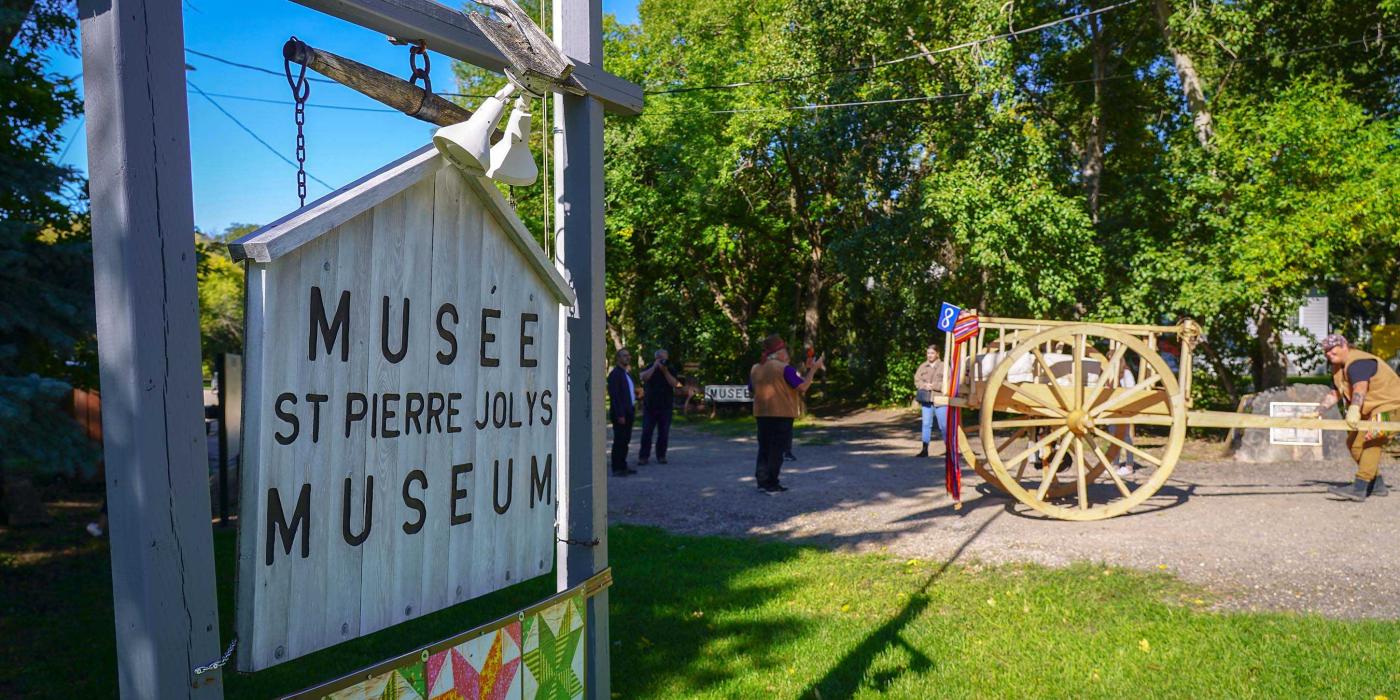
Posted: September 23, 2021 | Author: Kit Muir
Being able to participate in an experience goes a long way in learning, understanding and enjoying a tour. That’s exactly what these two tours at the St. Pierre Museum provide—a hands-on approach to history and food.
A visit to Manitoba means travelling through Treaty 1, 2, 3, 4 and 5 Territory and through communities who are signatories to Treaties 6 and 10. It encompasses the original lands of the Anishinaabeg, Anish-Ininiwak, Dakota, Dene, Ininiwak and Nehethowuk and the homeland of the Métis. To learn more about Manitoba's Treaty areas, click here.
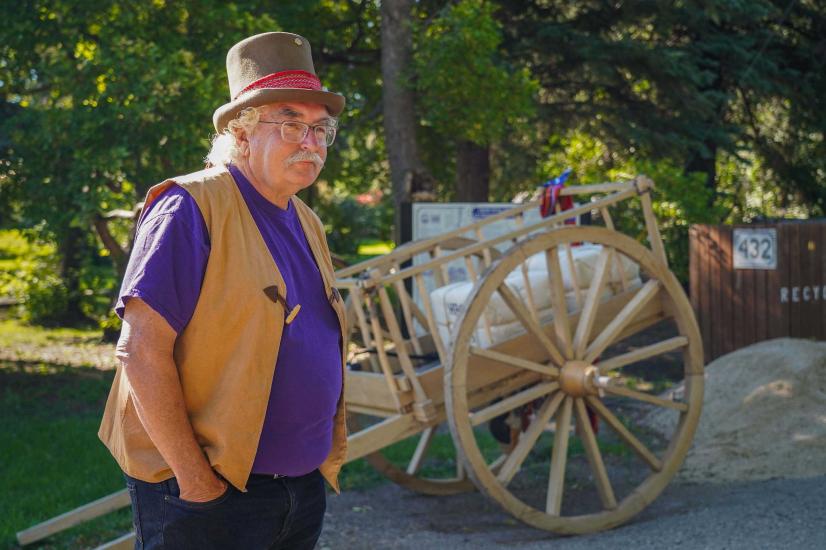
About 50 km south of Winnipeg, St-Pierre-Jolys is a charming village with deep Francophone and Métis roots on the banks of the Rat River. One of the major attractions in the village is the gem that is the St. Pierre Museum where I had the pleasure of spending my day while on my first ever trip to St-Pierre-Jolys.
The main museum, the grounds, the additional historic buildings, and the inviting and enthusiastic staff make the trip more than worth it. The two tours I had the pleasure of participating in left me feeling like I had gotten to know so much about the community and already had me planning a return trip for the annual Sugaring Off Festival in April.
The first tour of the day began with one of my favourite things—a culinary experience. Immediately we were getting our hands dirty and learning through doing. Josée, the owner and head chef of J’em Bistro, led everyone in our group through the steps of making tourtière, a French Canadian meat pie. We chopped vegetables, added spices and even made and formed our own pastry dough for our individual-sized tourtière, which we got to take home at the end of the day (what a treat!).
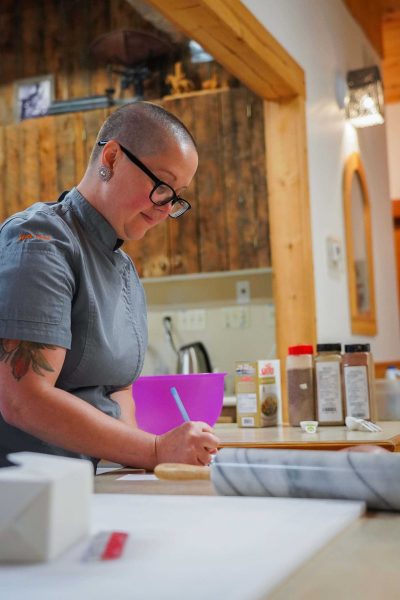
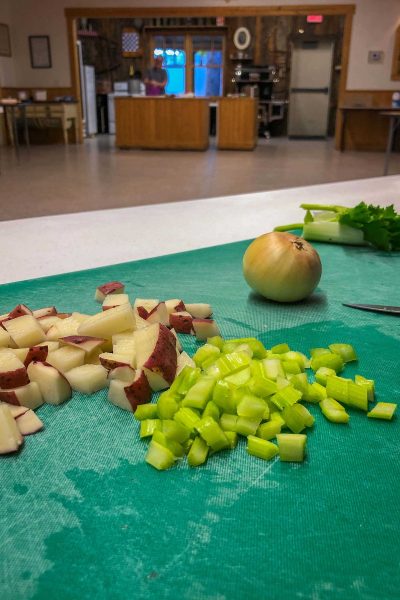
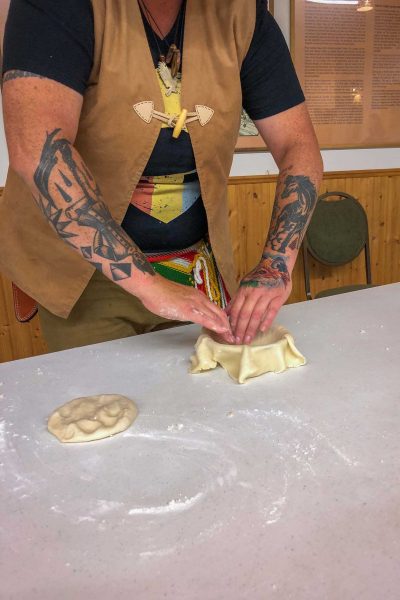
Once our pies were ready to go into the oven, we began the second part of the tour, a hands-on history lesson about the Métis roots of the region. Running along the edge of the museum’s property is a portion of the Crow Wing Trail which closely follows the route of the Red River Ox-Cart Trail, more heavily used in the 1800s. Along this small stretch of the Crow Wing Trail, we had the opportunity to try our hand at travelling the way Métis communities had, loading people and bales of supplies into the Red River cart, carrying bales over shoulders and on foreheads and travelling with the cart until the river, where the wheels would come off so the cart could float across.
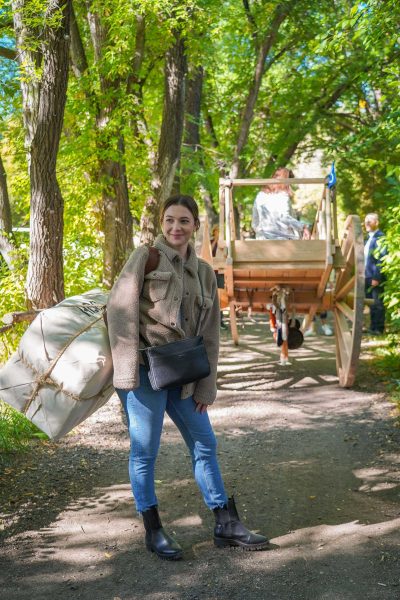
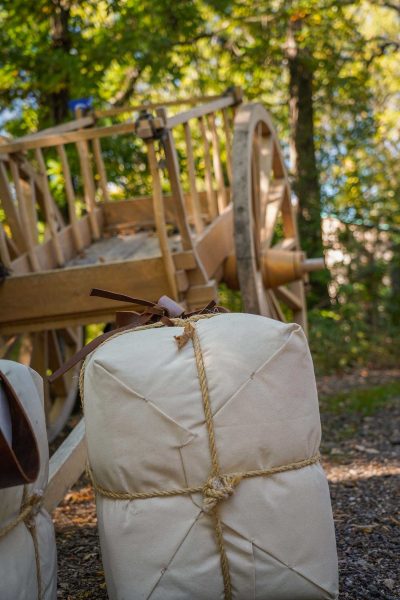

Our group didn’t travel far, heading just up to the Maison Goulet, at the back of the museum’s property. This historic house is an example of the Red River style architecture that uses hand-cut logs and dates back to the 1800s. This particular house was a resting place for freighters during their long travels across the land.
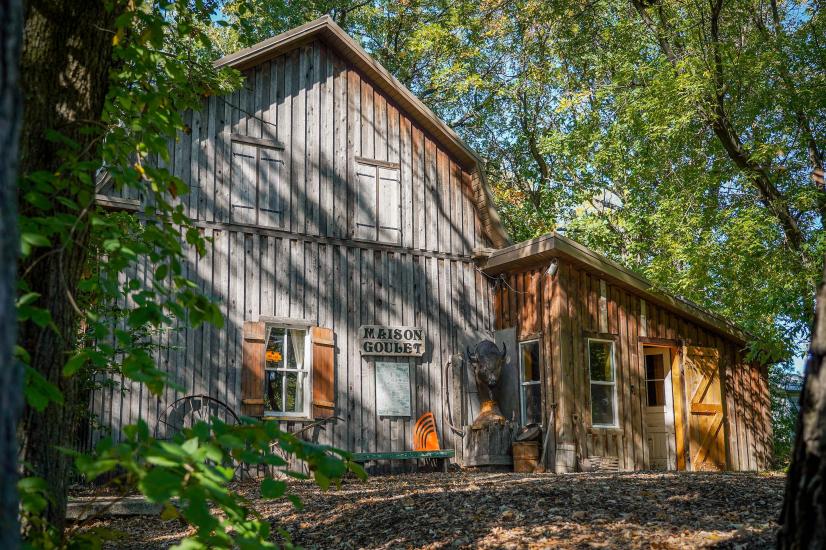
After a tour through the two-room building, we went outside to join Season, our second tour guide and owner and operator of the outdoor experiential tourism company SAYZOONS. Season introduced the group to a couple of traditional Indigenous games involving sticks, hoops made from branches, and a bit of kid-friendly archery.
Our first tour ended with lunch, tourtière made at J’em Bistro with St. Pierre maple syrup on the side, a taste of what was yet to come.
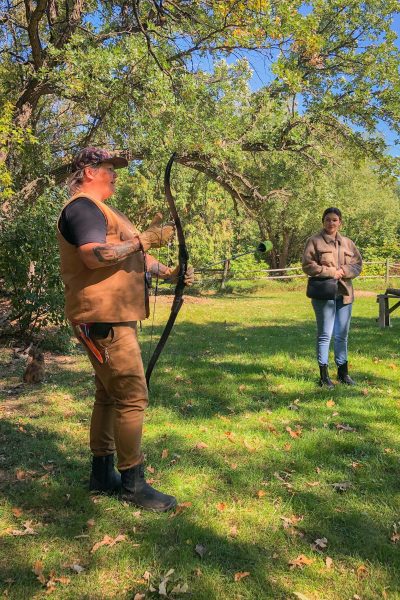
Tour number two is as sweet as it is fun! It’s filled with maple syrup goodness that’s all made right at the museum. If you’ve ever been to Festival du Voyageur, you may be familiar with the sugar shack where you can get “la tire”—maple syrup poured onto packed down snow then wrapped around a popsicle stick to form a kind of maple lollipop. All of that is cooked up and poured by volunteers and staff of the St. Pierre Museum. It’s the museum’s biggest fundraiser of the year.
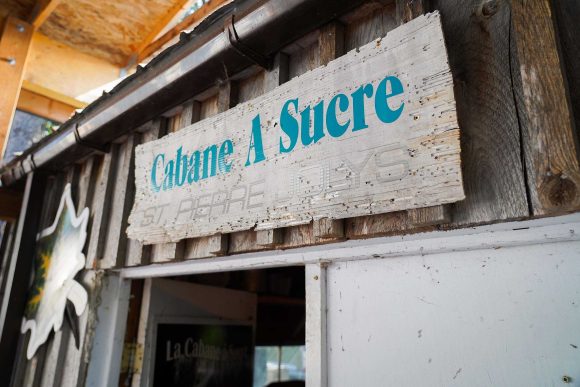
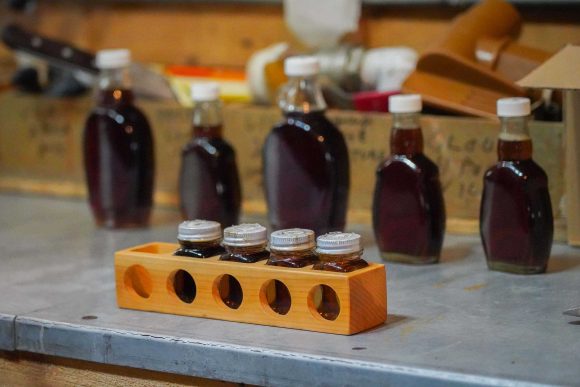
The museum makes all the maple syrup on the property in their own sugar shack, a real one, where maple water from over 350 trees across the community of St-Pierre-Jolys gets boiled down for hours then bottled. For one gallon of maple syrup it takes about 40 gallons of maple water!
We got to see inside the sugar shack where the maple magic happens and see all the steps of the process -- the spouts, taps, buckets and machinery involved. We also got to try our hand at inserting a tap into a tree (or a log in this case, so as to not put numerous unnecessary holes in living trees).
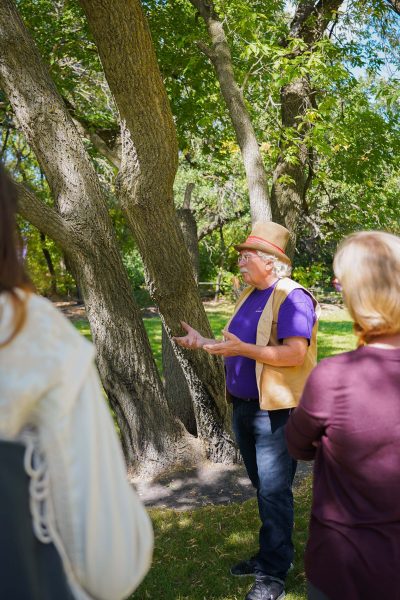
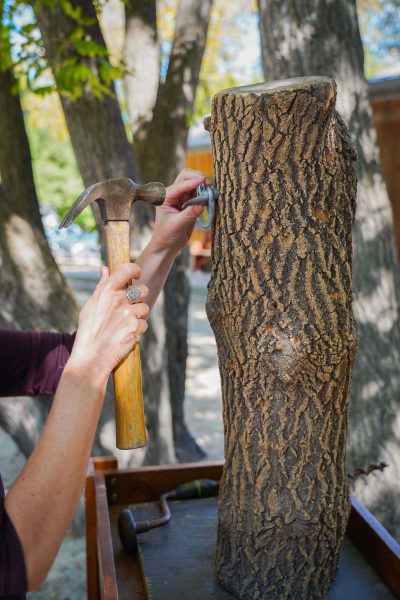
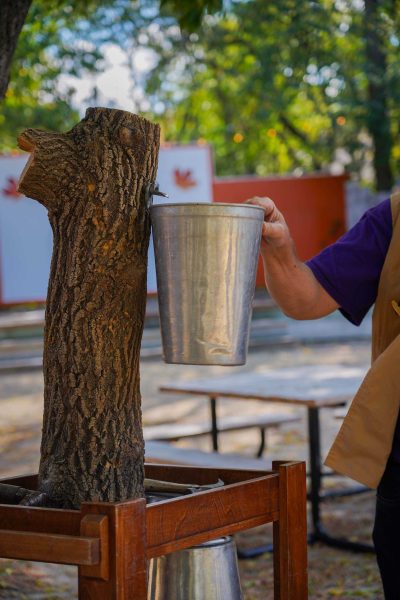
The next part may have been my favourite, tasting the maple syrup! But not just tasting—comparing. After having a sip of St-Pierre-Jolys syrup, we also took a sip from a sugar shack in Québec. The difference in taste was astonishing. I didn’t expect to be able to taste any difference at all, but I now understand why some places have maple syrup tastings similar to wine tastings, the notes and flavours are vastly different. And for the record, I and much of our group far preferred the St-Pierre-Jolys syrup!
The sweetness didn’t end here though. At the end of the tour we got more maple treats courtesy of J’em Bistro—a maple sandwich cookie, appropriately in the shape of a maple leaf, and homemade iced tea, sweetened with maple syrup. As a final treat, we also got to take home a small bottle of St. Pierre Museum maple syrup, the perfect accompaniment for my individual take-home tourtière.
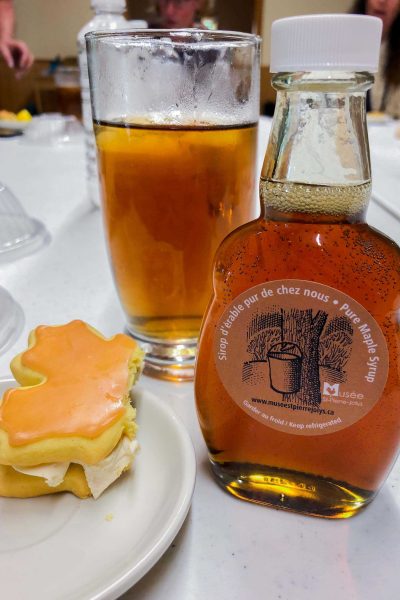
Both of these tours can be booked throughout October on the St. Pierre Museum’s website. The Rat River Métis Tour also offers different culinary experience options, so guests can make bannock instead of tourtière. Both tours can be offered in English or French.
On the way out, guests can also stop at J’em Bistro for a full meal or to pick up some of their delicious made-in-house preserves and pickles.
Travel Manitoba staff was hosted by CDEM, who did not review nor approve this story.
Events
Places To Go